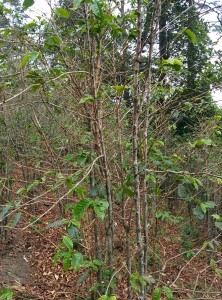Hugh and I are in the Netherlands, where we are getting ready to participate in the Sustainable Food Lab Summit, a meeting that gathers together different stakeholders in supply chains and facilitates a great discussion about finding solutions to ensure the future of our global supply chains. It is against this backdrop that I start to process the news that Blue Bottle just raised $70 million dollars in venture capital. This is after Philz Coffee raised $15 million and just 18 months after Blue Bottle secured $24 million dollars injection of venture capital funding. I think that this is great news for the specialty coffee industry as a whole and I salute Blue Bottle, James Freeman, Philz and the other retail leaders of specialty coffee for their vision and for elevating the coffee experience for the public. I’m looking forward to watching (and drinking!) the continued innovations. However, I long for the day when we can publicize and get excited about multi-million dollar direct investments into farmers and farmer organizations at the base of our supply chains. Not loans or donations or grants, but investment, with an expectation that returns can be made through investing in farms and farmers.
Unequal investment flows into opposite sides of the supply chain are intrinsically linked to a recent report the World Bank released a few weeks ago that caught my attention and has taken me a while to digest. Entitled Risk and finance in the coffee sector – this 140 page study takes a look at the myriad of challenges that a coffee farmer and farmer organizations face through the lens of risk and risk management, and how this ultimately determines the access to finance.
The authors of the report have constructed a very compelling argument. Put simply, the study argues that the inability of the farmer and of farmer organizations to properly address and manage risk limits their access to loans and other financial products, whereas the firms and businesses working on the retail end of the sector have less exposure to risk, understand how manage it better, and therefore receive financial support from banks, hedge funds and venture capital and others.
Yet, there is an inherent contradiction here. The segment of the coffee supply chain that needs investment the most and the one that receives it the least also happens to be the most vulnerable (just look here. And here. And here…). So the question is, how we help create the conditions so that we foment and develop opportunities for investment at the base of the supply chain? How can we invest the next $70 million dollars into the foundations of our supply chain?
And to understand how far that $70 million would go, let’s do a quick back-of-the-envelope calculation. Let’s take El Salvador – the Central American country that has been hit the hardest by roya and having the hardest time coming out of the crisis. Assuming a renovation cost of $4,000 per manzana (0.7 hectare) would mean that $70 million would fund the renovation of 17,500 manzanas. Considering that the entire amount of land dedicated to coffee production in El Salvador is approximately 218,000 manzanas means that the most recent injection of venture capital 218,000 manzanas, it would be enough to fund the renovation of about 8% of coffee from El Salvador. It is estimated that 60% of the parque cafetalera needs to be renovated, or approximately 130,000 manzanas. Using our estimated renovation cost, this would be a $520 million investment to ensure the future of coffee in El Salvador. For perspective, Root Capital has $100 million in active loans this year across the globe. It is not enough at the moment.
I’m hoping to engage with innovators in this area to help me understand and to explore ideas on how we can make a collective effort to work towards creating environments at origin that are attractive for investment. Specifically, what are new ways we can share and or transfer risk from farmers?
I hope to share some ideas with all of you in future posts.



